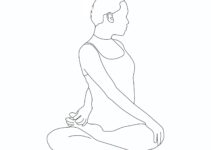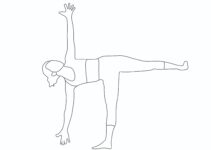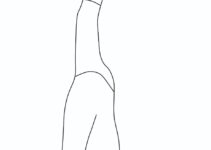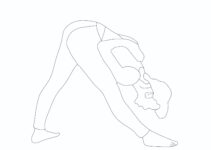The Eagle pose, called Garudasana in Sanskrit, means fierce bird of prey. An important standing yoga asana stretches shoulders, arms, upper back, and legs. It is known for balance, focus, strength, flexibility, and endurance and also develops poise and grace in the body. Besides these benefits, the Eagle pose is suitable for stretching shoulders and strengthening the core and legs. Garudasana is pronounced as ‘gah-rue-DAHS-anna.’
How to do eagle pose procedures?
- Stand with Tadasana.
- Raise the right leg and twist it around the left leg.
- Ideally, the right thigh should lie in front of the left thigh, and the right foot should rest on the calf of the left leg.
- Now fold the two arms at the elbows. Twist the left arm around the right arm.
- Try to place the palms together to resemble an eagle’s beak.
- Gaze at a fixed point in front of the body.
- Slowly bend the leg and lower the body as far as possible while maintaining balance.
- Keep your eyes fixed on the point in front of the body throughout.
- Maintain the final pose briefly and slowly return to the starting position.
- The same can be practised with another arm and leg.
Breathing
One can maintain normal breathing throughout the practice. However, it is better to perform it by exhaling while bending arms and legs.
10 health benefits of eagle pose
- It helps to relieve hydrocele if it is done regularly and for a reasonable duration.
- This asana helps to bring about mental and physical tranquillity.
- It strengthens the muscles of the legs, tones the nerves, and loosens the joints.
- It helps to alleviate sciatica and rheumatism in the legs and arms.
- It helps for the overall development of the testacies.
- The yoga pose is beneficial in case of anorectal and urinary problems.
- The practice of Garudasana makes one’s concentration more focused.
- It is one of the essential yoga poses for balancing.
- It is the best yoga pose for hip opening.
- It is suitable for neuromuscular coordination, too.
Contraindications
- Arthritis
- Varicose veins
- Pregnancy
- Low blood pressure
- Headache
- Inner ear problems
- Skip it during knee, arms, and shoulder injuries.
Precautions
- Alignment of hands, arms, and thighs is essential.
- The back should be straight instead of round one.
Anatomy
The following muscles are involved.
- Mild spinal flexion
- Scapula abduction
- Upward and lateral rotation
- Glenohumeral external rotation
- Elbow flexion
- Forearm pronation
- Neutral wrist extension
- Pelvis anterior tilt
- Hip flexion
How should the beginner start?
Initially, practising this asana takes a lot of work. The fresher should practice it with the help of a wall in the beginning stage. There are problems with balance and stability in the case of beginners.
Origin
In Hindu mythology, the yoga poses are synonyms with the vehicle of God Vishnu, who used it to ride against the wind. In the yogic text, Gheranda Samhita is described in verse 2.37. It has also been mentioned in Sritattvanidhi.
Preparatory pose
- Yogic Sukshma Vyayama
- Tadasana
- Triangle pose
- Tree pose
- Katichakrasana
- Warrior pose
Counter pose
- Sirsasana
- Sarvangasana
- Triangle pose
- Viparita Karni
Top facts about Eagle pose
- In the Hindu and Buddhist mythology, Garudasana is called the “king of the birds.”
- In Sanskrit, Garudasana is pronounced as ‘gah-rue-DAHS-anna.’
- Garuda means “king of the birds,” or “eagle” in English, or “devourer,”
- It is a standing yoga pose that targets the entire body.
- It is a perfect yoga pose for those sitting for long hours before the computer and having shoulder pain issues.
Variations of Eagle Pose
- Instead of wrapping your legs, try to cross your legs, whatever you can.
- It can be done by sitting on the chair by wrapping the legs and interlocking the arms.
- If you are having problems standing on one leg, practice it with the support of a wall.
Difficulty
The pose is relatively easy. Since it works on all joints simultaneously, it requires practice and balance from the practitioner’s side. Many practitioners visited me and complained about the difficulty levels in its approach.





